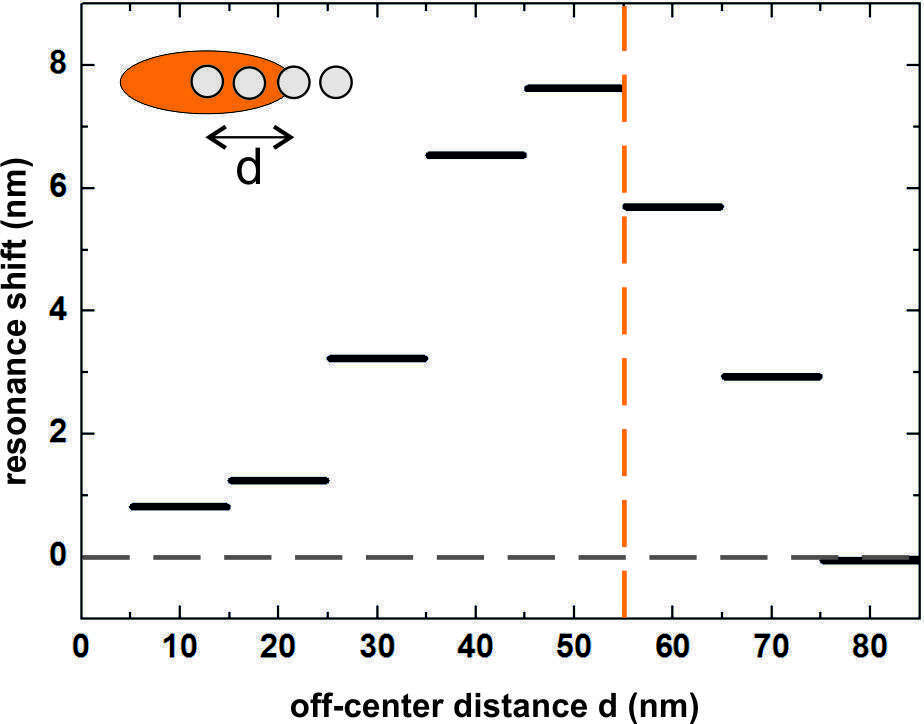
Local Refractive Index Sensitivity of Gold Nanoparticles
Plasmonic nanoparticles allow the sensing of single nanoscale objects (e.g., molecules) by transducing changes in the local refractive index into a spectral plasmon resonance shifts [i]. Since the particle’s sensitivity profile depends crucially on the spatial profile of its usually strongly inhomogeneous electromagnetic near field, random binding of individual molecules leads to position dependent spectral shifts [ii]. To enable quantitative measurements at low concentrations by counting single molecules a spatially uniform and at the same time high sensitivity is an essential condition.
We experimentally investigate the local refractive index sensitivity of plasmonic gold nanoparticles by applying small dielectric dots to selected nanodisk and nanorod sites by means of two-step electron beam lithography. Depending on the dot position, quantitative differences in spectral shifts up to a factor seven were observed. Measured sensitivity profiles obtained from tracking the dot-induced spectral shift of the plasmon modes (figure) are in excellent agreement with numerical simulation of both spectral sensitivity and the electric near field profiles. Based on the particle sensitivity profiles we tailor sensitive and spatially uniform plasmonic sensors by masking selected nanoparticle sites. By capping nanodisks with a dielectric layer and masking nanorods with polymer stripes, analyte access is restricted to the sensitive disk rim and rod tips, respectively.
[i] K. L. Kelly, E. Coronado, L. L. Zhao, G. C. Schatz, “The Optical Properties of Metal Nanoparticles: The Influence of Size, Shape, and Dielectric Environment,” J. Phys. Chem. B 107(3), 668-677 (2003).
[ii] M. Piliarik, P. Kvasnička, N. Galler, J. R. Krenn, and J. Homola, “Local refractive index sensitivity of plasmonic nanoparticles,” Opt. Express 19(10), 9213-9220 (2011).

Figure: Measured plasmonic resonance shift of a gold nanorod (lengths 110 nm, width 40 nm, height 30 nm), as a function of the position of a silicon dioxide particle (20 nm diameter, 20 nm height), as sketched in the inset.
verena.haefele@uni-graz.at
Powered by Eventact EMS